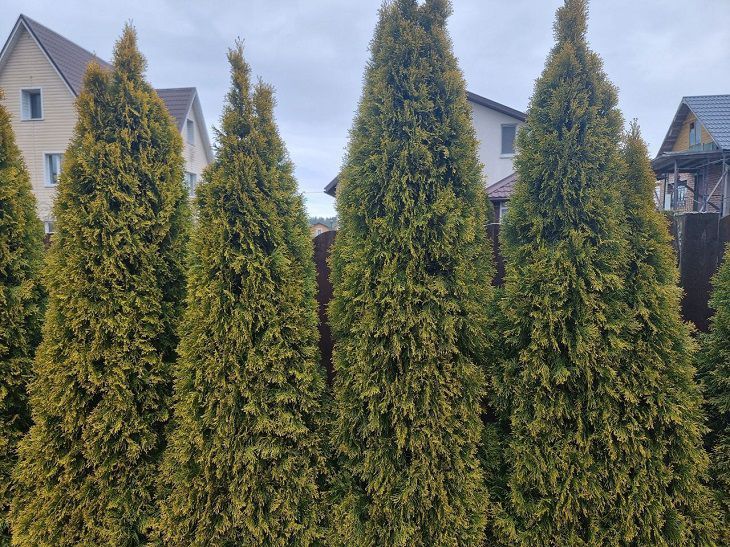Many summer residents and other owners of land plots are happy to “register” thujas in their areas.
In terms of landscape design, the ornamental plant has a number of advantages, and is also unpretentious.
In particular, evergreen coniferous trees can become a decoration of a summer cottage.

According to the expert of the online publication BelNovosti, scientist-agronomist and landscape designer Anastasia Kovrizhnykh , thuja is excellent in terms of aesthetics as a magnificent hedge.
But also individually planted plants, taking into account the features of the site and landscape, create a very attractive overall appearance and an atmosphere of well-being and comfort.
When thuja causes harm
At the same time, thuja can become your enemy if you ignore some rules when planting.
For example, if you choose the wrong place for a thuja, then it may have problems. As well as neighboring plantings and buildings.
Therefore, it is necessary to plant the plant at a safe distance from residential buildings.
Otherwise, the extremely powerful root system of the flora representative can damage the foundation.
Experts recommend planting thuja at least three meters from the house.
Oppression of neighbors
It is also advised not to allow it to be planted next to berry bushes.
In particular, do not let conifers near raspberries, gooseberries and currants - they may suffer and leave you without a harvest.
Also, thuja does not get along well with plants that have a developed root system.
Competition for nutrients can cause growth problems in neighboring crops.
In addition, the distance between the thujas themselves must be maintained.
Depending on the variety and intended composition, plants should be spaced from 1.5 to 5 meters apart.

